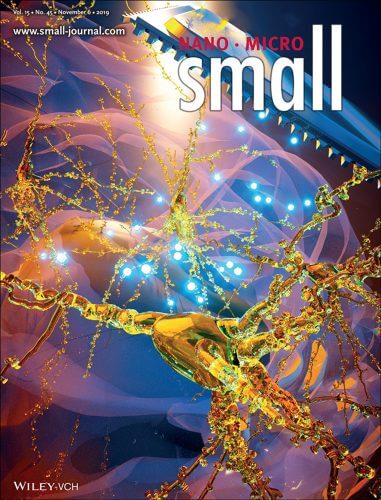The chips are inserted into the brain using a "gene gun" and release an essential protein that may slow down the development of Alzheimer's disease

Researchers at the Technion and their partners at Bar Ilan University have developed a new technology to curb the development of Alzheimer's disease. The study was recently published in the journal Small and featured by him as the back cover of the magazine. The research was led by Prof. Esti Segal and Ph.D. student Michal Rosenberg from the Faculty of Biotechnology and Food Engineering at the Technion and their partners, Prof. Orit Shafi and Ph.D. student Neta Ziloni from the Faculty of Engineering at Bar-Ilan University.
Alzheimer's, the most common form of dementia, is characterized by various symptoms including memory loss, speech impairments, orientation problems and a significant decrease in motor functions. This disease mainly characterizes an elderly population, and after the age of 85 its incidence reaches about 30%. Following the increase in life expectancy and the increase in the adult population, the overall incidence of the disease has increased and is currently defined as the "grey plague" or the "plague of the 21st century".
Alzheimer's is a neurodegenerative disease - a disease that originates from the degeneration of brain cells. The main cause of the disease is the accumulation of a protein called amyloid-beta (Aβ) in the brain tissues. The protein blocks kill the nerve cells, the neurons, in different areas of the brain, and lead, among other things, to damage to the cholinergic mechanisms that are essential for brain function.
The good news is that the administration of a specific protein (nerve growth factor) inhibits the damage to the cholinergic mechanisms and the worsening of the disease. The problem is that introducing the protein to the target area in the brain is not a simple task because the Brain Blood Barrier is between the blood and the brain. This barrier, which protects the central nervous system (brain) from the penetration of bacteria and harmful substances from the blood into the brain, limits the passage of drugs intended for brain diseases.
Now the Technion and Bar Ilan University researchers present an innovative solution to the said challenge: silicon chips for direct introduction of the protein into the brain and its release in the target tissue. The dedicated silicon chips, developed in Prof. Segal's lab at the Technion, have a nanometer porous structure that allows them to be loaded with large amounts of protein. Through precise control of the chip's characteristics - the dimensions of the pores, the chemical properties of the surface, and more - the researchers arrived at an optimal configuration that keeps the protein in the insertion phase and then gradually releases it in the brain, for about a month.
In this way, as mentioned, the protein is not required to cross the blood-brain barrier since it is inserted directly into the brain in one of two ways - by implantation in the brain (as a chip) or by sending it to the target as tiny particles using a dedicated "Gene Gun". ["Gene gun" - an existing system for introducing proteins, DNA and RNA into cells, by shooting metal particles coated with these molecules. This technology is also called biolistics]. Upon arrival at the target location in the brain, the protein is released from the chip and the chip breaks down into non-toxic components.
According to PhD student Michal Rosenberg, "In the experiment we showed in mice that both ways of introducing the platform into the brain lead to the desired result. Furthermore, our technology was also tested in a cell model of Alzheimer's disease and indeed, the release of the protein led to the rescue of the cells."
The research was conducted with the support of the Russell Berry Institute for Nanotechnology at the Technion.
More of the topic in Hayadan:
- Researchers have grown a human blood-brain barrier outside the body, in a way that makes it possible to predict the penetration of drugs into the brain in a customized way
- "A brain system on a chip revealed to us new details about the activity of the blood-brain barrier, which will help in the treatment of Alzheimer's and the effects of drugs"
- Discovery: how certain blood vessels in the brain open "windows" that allow overcoming the blood-brain barrier
